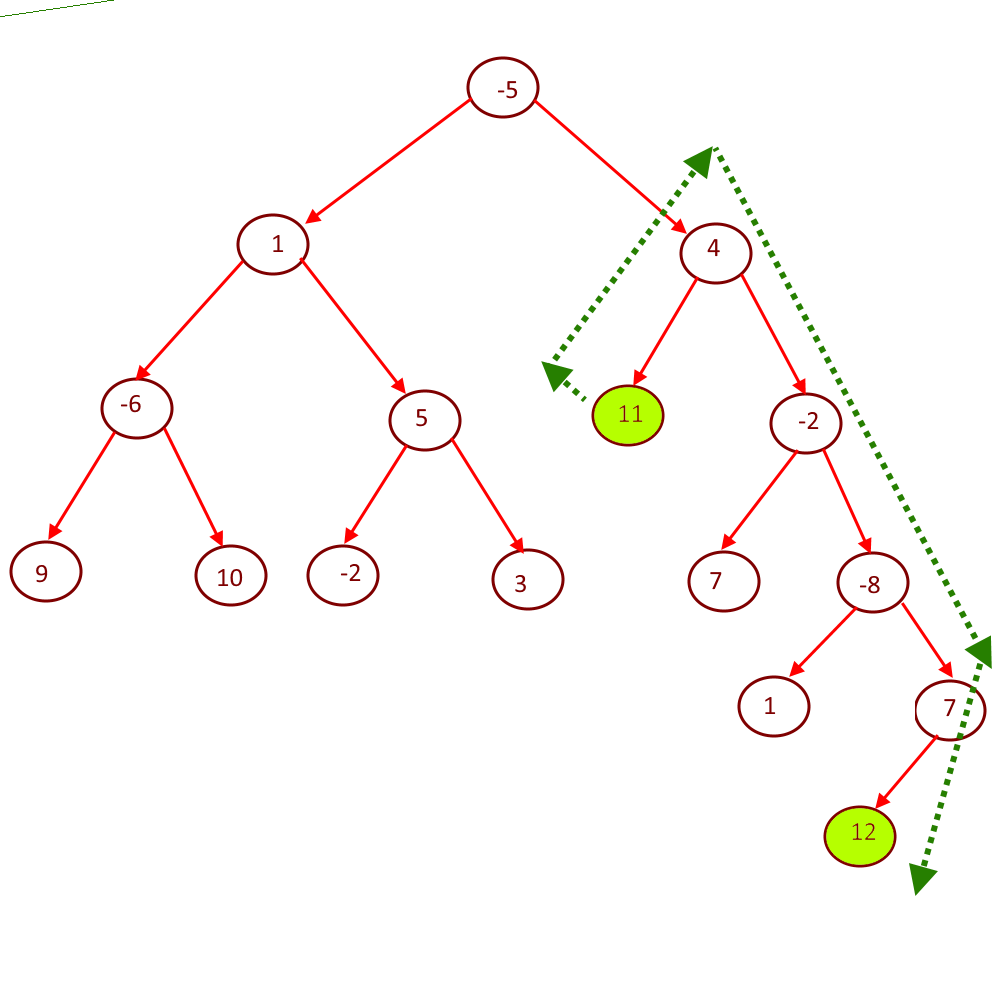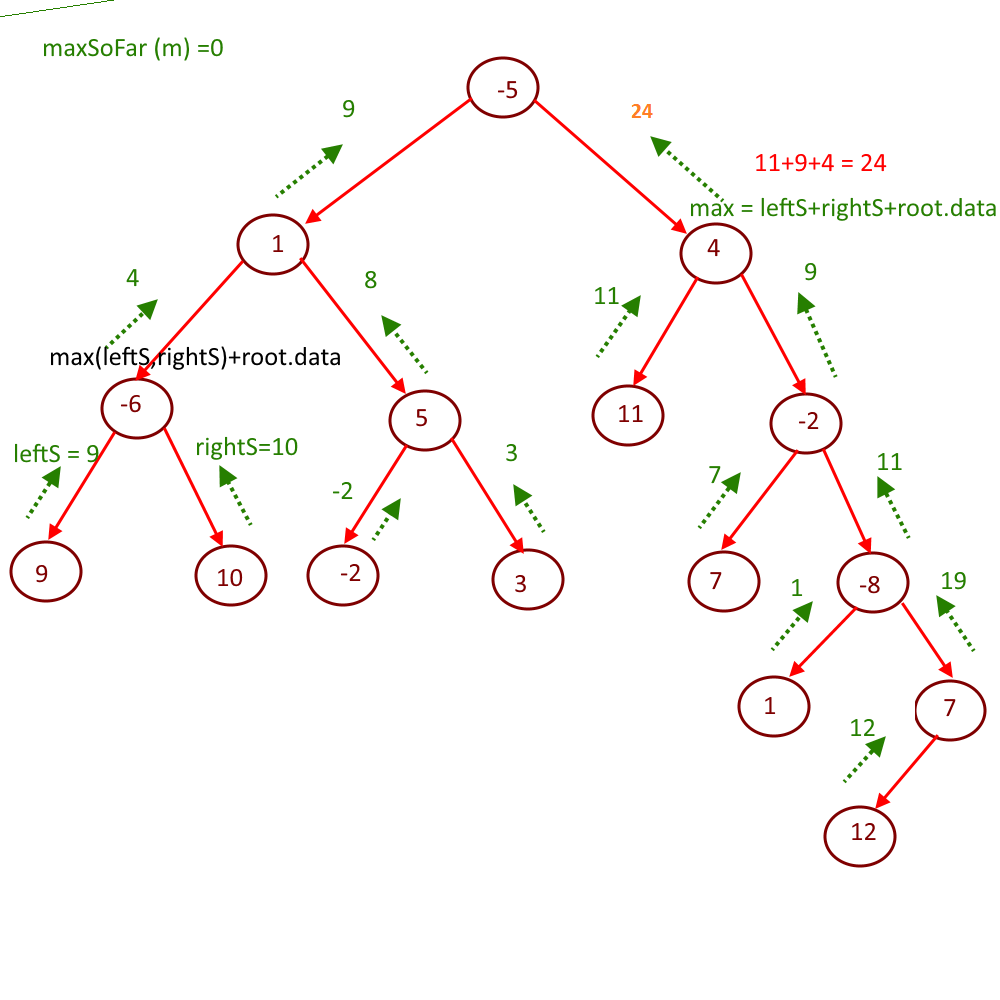|
Be the first user to complete this post
|
Add to List |
65. Given a binary tree, Find the Maximum Path Sum between Any Two Leaves
Objective: Given a binary tree, find the maximum path sum from one leaf node to another.
Example:

Approach:
- Max path will be either on the
- Left subtree
- Right subtree
- Some parts are on the left and some parts are on the right and pass through the root
- The idea is to calculate the maximum path sum at each node, keep track of it, and return at the end.
- Take a variable say, maxSoFar=0 this will be the final result.
- Do postOrder traversal, This will give results from the left and right subtree, call it RLS and RLS respectively.
- Now at each node calculate sumCurrent =Max (RLS, RLS, RLS + RLS + Root data) and update maxSoFar = sumCurrent if maxSoFar<sumCurrent
- At each node return Max (RLS, RLS ) +root.data. (return max path from the current node)
- See the image below for better understanding

Output:
Max Path Sum Between Two Leaves is 24

